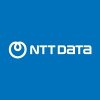


i
Tiger
Analytics
Work with us
![]()
Filter interviews by
Tiger Analytics Senior Software Engineer Interview Questions and Answers
7 Interview questions
Using SQL's GROUP BY and aggregate functions to summarize data effectively.
GROUP BY is used to arrange identical data into groups.
Aggregate functions like COUNT(), SUM(), AVG(), MAX(), and MIN() summarize data.
Example: SELECT department, COUNT(*) FROM employees GROUP BY department; returns the number of employees in each department.
You can combine multiple aggregate functions: SELECT department, AVG(salary), MAX(s...
Use SQL GROUP BY and ORDER BY DESC to fetch the highest row of each group in a dataset.
Use GROUP BY to aggregate data based on a specific column.
Use ORDER BY DESC to sort the results in descending order.
Use LIMIT 1 to fetch only the top result from each group.
Example: SELECT department, MAX(salary) FROM employees GROUP BY department ORDER BY MAX(salary) DESC LIMIT 1;
This query retrieves the department with the hig...
Creating tables in Flask using SQLAlchemy involves defining models and initializing the database.
Import necessary modules: from flask import Flask, from flask_sqlalchemy import SQLAlchemy.
Initialize Flask app and SQLAlchemy: app = Flask(__name__), db = SQLAlchemy(app).
Define a model class: class User(db.Model):, with attributes like id, name, email.
Use db.create_all() to create tables based on defined models.
Examp...
Count letter occurrences in a sentence and identify the maximum occurring letter.
Use a dictionary to store letter counts. Example: 'a': 3, 'b': 2.
Iterate through each character in the sentence, ignoring spaces and punctuation.
Find the maximum count and corresponding letter using the dictionary.
Consider case sensitivity: 'A' and 'a' can be counted separately or together.
Yes, numpy and pandas are Python libraries used for data analysis and manipulation.
NumPy is used for numerical operations on arrays and matrices.
Pandas is used for data manipulation and analysis, providing data structures like DataFrame.
Both libraries are commonly used in data science and machine learning.
Example: import numpy as np; import pandas as pd;
Generator generates values on the fly while iterator iterates over a collection of values.
Generator is a function that returns an iterator.
Generators use 'yield' keyword to return values one at a time.
Iterators are objects that implement the 'next' method to return the next value in a collection.
Iterators can be created from arrays, strings, maps, sets, etc.
Generators are useful for generating large sequences of v...
List is mutable and Tuple is immutable in Python.
List can be modified after creation while Tuple cannot be modified.
List uses square brackets [] while Tuple uses parentheses ().
List is used for homogenous data while Tuple is used for heterogenous data.
List is slower than Tuple in terms of performance.
Example of List: [1, 2, 3] and Example of Tuple: (1, 'hello', 3.14)
Tiger Analytics Senior Software Engineer Interview Experiences
8 interviews found
I applied via Naukri.com and was interviewed in Dec 2024. There were 3 interview rounds.
(1 Question)
- Q1. Questions on java , spring boot , containarisation tools, coding, SOLID principles
5 coading questions were asked in it
(1 Question)
- Q1. Manegerial round
I applied via Naukri.com and was interviewed in Jan 2023. There were 3 interview rounds.

(1 Question)
- Q1. Spark architecture pyspark coding sql coding
(1 Question)
- Q1. Spark architecture sql window functions,aggreate functions pyspark data frame coding
Interview Preparation Tips
Few MCQ's and along with couple of SQL scenario questions
(1 Question)
- Q1. More of the project experience, skillset acquired and willing to learn or not
(1 Question)
- Q1. More of a skillset related and also the attitude
(1 Question)
- Q1. Compensation related and also the benefits
Interview Preparation Tips

Spark, python related questions
(1 Question)
- Q1. Previous project, scenario based problem to solve
(1 Question)
- Q1. Package, preffered location
Interview Preparation Tips
I applied via Naukri.com and was interviewed before May 2023. There were 2 interview rounds.
2sql 2 python questions were to be coded
(1 Question)
- Q1. Simple questions regarding bde aws were asked
I applied via Naukri.com and was interviewed in Jun 2021. There were 4 interview rounds.

(7 Questions)
- Q1. What is the difference between List and Tuple?
- Q2. What is __init__ ? Follow up question why is __ (double underscore) used?
- Q3. A SQL query based on group by and order by DESC LIMIT 1 in order to fetch highest row of a group in a dataset given by panelist.
- Ans.
Use SQL GROUP BY and ORDER BY DESC to fetch the highest row of each group in a dataset.
Use GROUP BY to aggregate data based on a specific column.
Use ORDER BY DESC to sort the results in descending order.
Use LIMIT 1 to fetch only the top result from each group.
Example: SELECT department, MAX(salary) FROM employees GROUP BY department ORDER BY MAX(salary) DESC LIMIT 1;
This query retrieves the department with the highest ...
- Q4. A simple query on SQL using group by and aggregate function.
- Ans.
Using SQL's GROUP BY and aggregate functions to summarize data effectively.
GROUP BY is used to arrange identical data into groups.
Aggregate functions like COUNT(), SUM(), AVG(), MAX(), and MIN() summarize data.
Example: SELECT department, COUNT(*) FROM employees GROUP BY department; returns the number of employees in each department.
You can combine multiple aggregate functions: SELECT department, AVG(salary), MAX(salary...
- Q5. Panelist asked about my previous work experience and projects I worked upon earlier and the technologies used.
- Q6. Question on how do we create table using SQL Alchemy in Flask (since I had used Python Flask in one of my previous projects and had highlighted it pretty well on my resume).
- Ans.
Creating tables in Flask using SQLAlchemy involves defining models and initializing the database.
Import necessary modules: from flask import Flask, from flask_sqlalchemy import SQLAlchemy.
Initialize Flask app and SQLAlchemy: app = Flask(__name__), db = SQLAlchemy(app).
Define a model class: class User(db.Model):, with attributes like id, name, email.
Use db.create_all() to create tables based on defined models.
Example mo...
- Q7. How is memory managed in Python?
- Ans.
Python uses automatic memory management through garbage collection.
Python uses reference counting to keep track of memory usage.
When an object's reference count drops to zero, it is deleted.
Python also uses a garbage collector to handle circular references.
Memory allocation is handled by the Python memory manager.
Python provides tools like the 'gc' module for managing memory usage.
(5 Questions)
- Q1. Question on List operation.
- Q2. Do you know numpy pandas?
- Ans.
Yes, numpy and pandas are Python libraries used for data analysis and manipulation.
NumPy is used for numerical operations on arrays and matrices.
Pandas is used for data manipulation and analysis, providing data structures like DataFrame.
Both libraries are commonly used in data science and machine learning.
Example: import numpy as np; import pandas as pd;
- Q3. A question to count number of times a letter occurs in a sentence and then also find the maximum occurring letter.
- Ans.
Count letter occurrences in a sentence and identify the maximum occurring letter.
Use a dictionary to store letter counts. Example: 'a': 3, 'b': 2.
Iterate through each character in the sentence, ignoring spaces and punctuation.
Find the maximum count and corresponding letter using the dictionary.
Consider case sensitivity: 'A' and 'a' can be counted separately or together.
- Q4. Difference between generator and iterator?
- Ans.
Generator generates values on the fly while iterator iterates over a collection of values.
Generator is a function that returns an iterator.
Generators use 'yield' keyword to return values one at a time.
Iterators are objects that implement the 'next' method to return the next value in a collection.
Iterators can be created from arrays, strings, maps, sets, etc.
Generators are useful for generating large sequences of values...
- Q5. What is the selling point about you why should we consider you over other candidate?
(2 Questions)
- Q1. Why are you looking for a change?
- Q2. What are your salary expectations?
Interview Preparation Tips
- Python
- SQL
- Logic Building
- Numpy
- Pandas
Skills evaluated in this interview
I applied via LinkedIn and was interviewed in Sep 2021. There were 4 interview rounds.
There were 4 sections-
1.Big data-some multiple choice questions
2.Python-2 basic programming questions
3.SQL-4 case questions on SQL queries
4.Pyspark-Basic multiple choice questions
Same as round 1 but there were no multiple choice questions,it was a subjective paper where they check your thought process and your approach.
(1 Question)
- Q1. Technical interview was based on -Your project discussion -Big data terminologies,Spark framework,working and architecture -Some case study questions and how you could have optimized it. -SQL basic querie...
(4 Questions)
- Q1. Share details of your previous job.
- Q2. Why are you looking for a change?
- Q3. What are your salary expectations?
- Q4. Tell me about yourself.
Interview Preparation Tips
- Pyspark
- Spark
- Azure data factory
- SQL
- Python
- Big data
I applied via Naukri.com and was interviewed in Sep 2021. There were 3 interview rounds.
Interview Questionnaire
1 Question
- Q1. All questions are mainly related to sql,spark, understanding of data structures ,performance tuning,scenario based questions.
Interview Preparation Tips
Top trending discussions




Interview questions from similar companies

I applied via Naukri.com and was interviewed in Feb 2020. There were 4 interview rounds.
Interview Questionnaire
1 Question
- Q1. In first round they asked basic questions related to Object Oriented Programming, MVC, Sql. In the second round they asked questions related to LiNQ, Entity Framework, C#, SQL Server.
Interview Preparation Tips

I applied via Naukri.com and was interviewed before May 2021. There was 1 interview round.
(1 Question)
- Q1. Mean stack interview
Interview Preparation Tips
Tiger Analytics Interview FAQs
Some of the top questions asked at the Tiger Analytics Senior Software Engineer interview -
Tell us how to improve this page.
Tiger Analytics Interviews By Designations
- Tiger Analytics Senior Analyst Interview Questions
- Tiger Analytics Data Engineer Interview Questions
- Tiger Analytics Data Scientist Interview Questions
- Tiger Analytics Data Analyst Interview Questions
- Tiger Analytics Analyst Interview Questions
- Tiger Analytics Senior Software Engineer Interview Questions
- Tiger Analytics Senior Data Engineer Interview Questions
- Tiger Analytics Senior Data Analyst Interview Questions
- Show more
Interview Questions for Popular Designations
- Software Developer Interview Questions
- Software Engineer Interview Questions
- Senior Engineer Interview Questions
- System Engineer Interview Questions
- Associate Software Engineer Interview Questions
- Project Engineer Interview Questions
- Senior Software Developer Interview Questions
- Lead Engineer Interview Questions
- Show more
Overall Interview Experience Rating
based on 4 interview experiences
Difficulty level
Duration
Interview Questions from Similar Companies
Tiger Analytics Senior Software Engineer Reviews and Ratings
based on 56 reviews
Rating in categories
|
Data Engineer
651
salaries
| ₹13 L/yr - ₹25 L/yr |
|
Senior Analyst
605
salaries
| ₹10 L/yr - ₹17 L/yr |
|
Data Scientist
599
salaries
| ₹12.6 L/yr - ₹23 L/yr |
|
Senior Software Engineer
500
salaries
| ₹9.4 L/yr - ₹18 L/yr |
|
Data Analyst
280
salaries
| ₹9.4 L/yr - ₹17.6 L/yr |

DXC Technology

Optum Global Solutions

Virtusa Consulting Services

CGI Group
- Home >
- Interviews >
- Tiger Analytics Interview Questions















